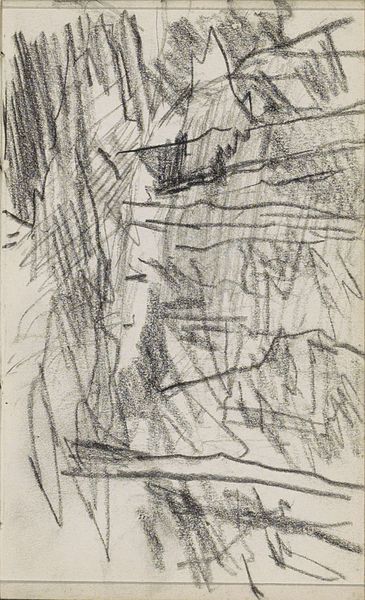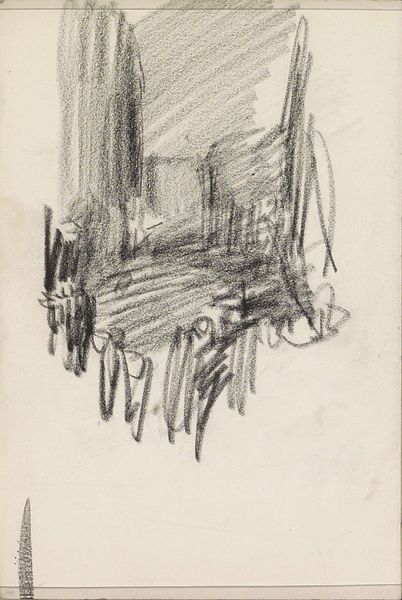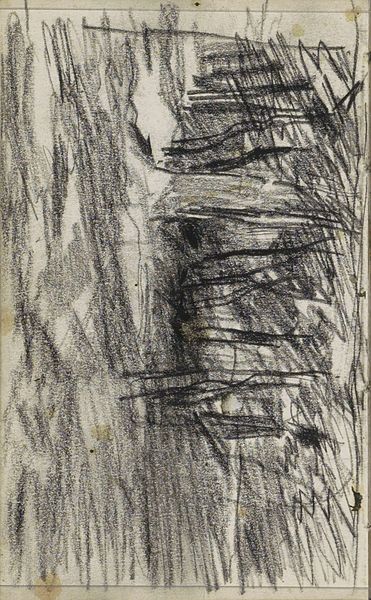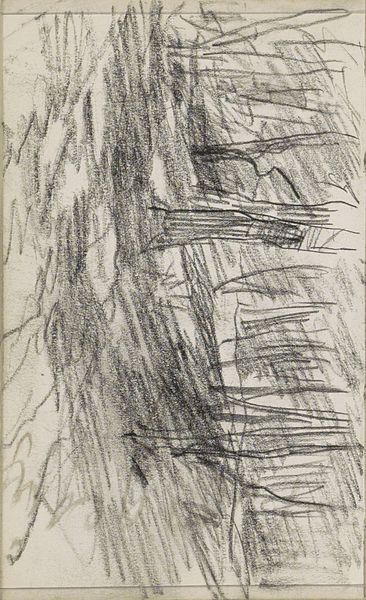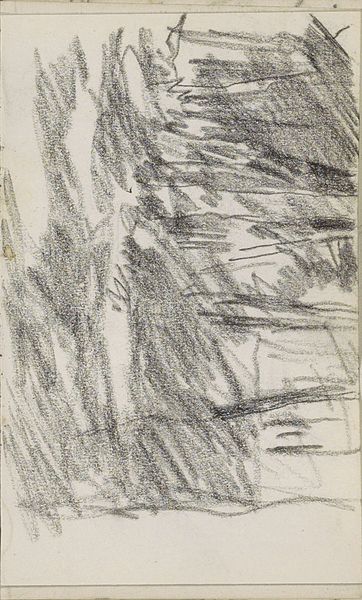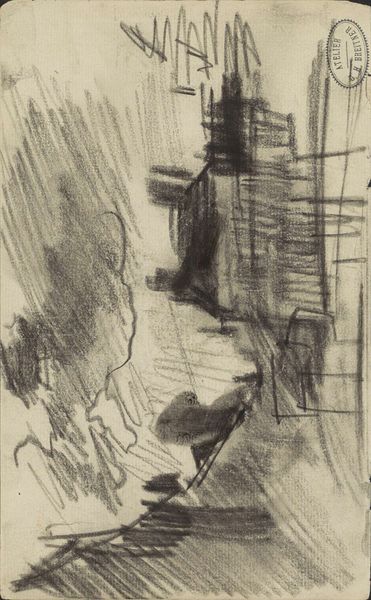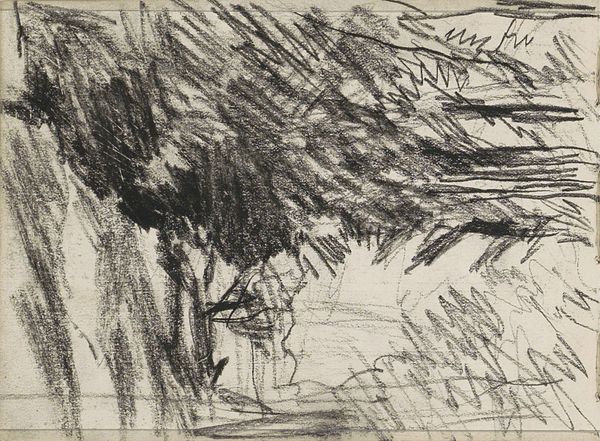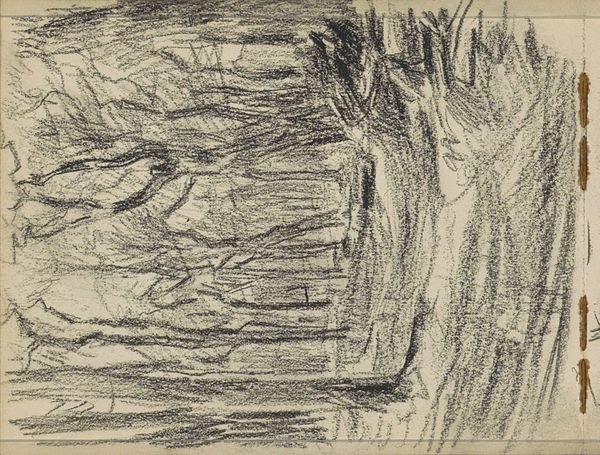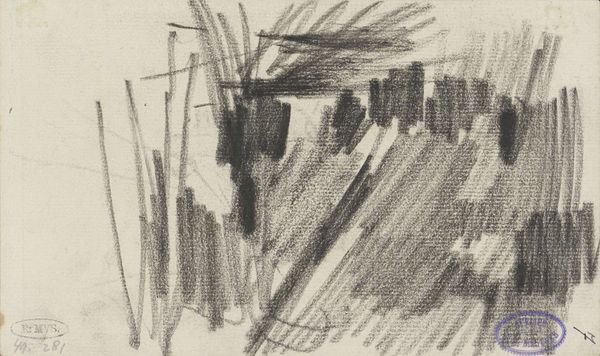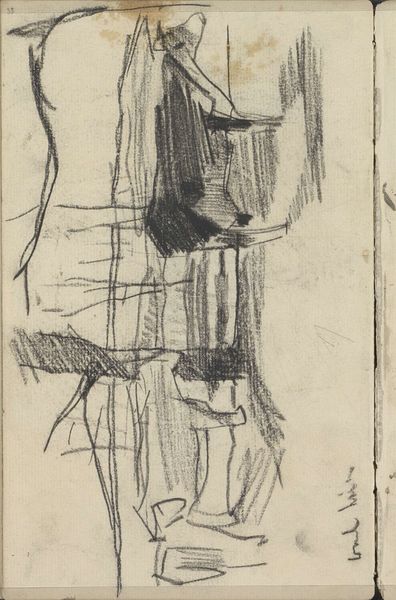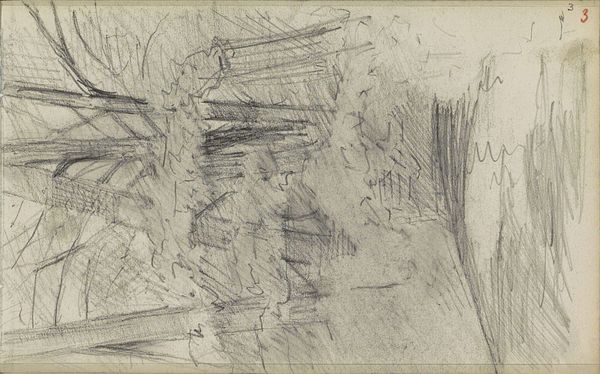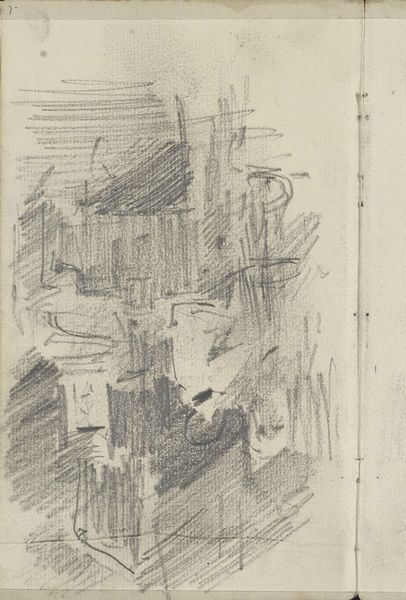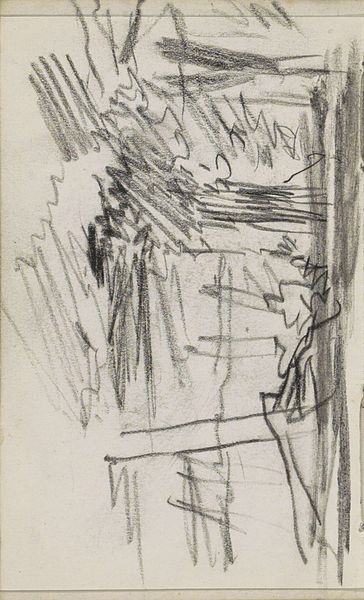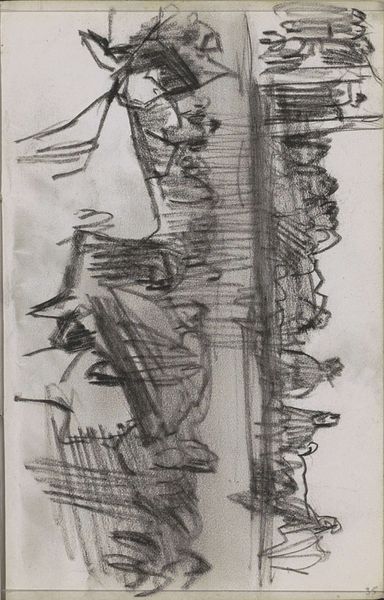
Copyright: Rijks Museum: Open Domain
Curator: This is Isaac Israels' "Figuren op straat," dating roughly from 1875 to 1934. It's a pencil and graphite drawing currently held here at the Rijksmuseum. Editor: My first impression is chaotic energy. A flurry of lines trying to capture a fleeting moment. Almost vibrating. Curator: Precisely. Look closely at Israels' technique. The raw, almost frantic strokes. This wasn't about precise representation; it was about capturing the essence of a street scene in motion. The medium itself lends to that sense of urgency – the humble pencil as a tool for social observation. Editor: Are the buildings supposed to loom so menacingly? Given their weight and depth of shadow, that's what stands out. I can almost feel the tension of that street corner pressing down on the figures, if I'm even correct to interpret human figures. Curator: The sketch emphasizes the city's architecture as a backdrop against which these ephemeral figures appear, they are truly suggested more than depicted. Do you think it’s revealing some deep psychological stress in the period when it was sketched? What cultural messages were these street corners suggesting? Editor: I see figures now, partially obscured. Consider that charcoal, the method that Isreals selected. This is accessible, affordable material. I sense it allowed quick sketching in public, blending into the very environment he documented. The unfinished nature emphasizes the artist as a working observer, not just someone making 'fine art'. Curator: And there’s a significant link here to the rapid industrialization of the city. Mass production touches everything, even art-making. It really underscores a move away from rigid academic practices towards something far more immediate, responsive, reflecting a democratization of the means of representation. Editor: The recurring theme of city life is quite interesting too, it shows how art started to shift in its themes. Curator: I agree. It's a great example of how the most humble materials can capture the complex dynamism of a society undergoing significant change, revealing the hand of the artist and the social forces at play. Editor: It does reveal something honest. I leave seeing a very small glimpse into what Israels himself experienced and processed while observing his direct surroundings.
Comments
No comments
Be the first to comment and join the conversation on the ultimate creative platform.
